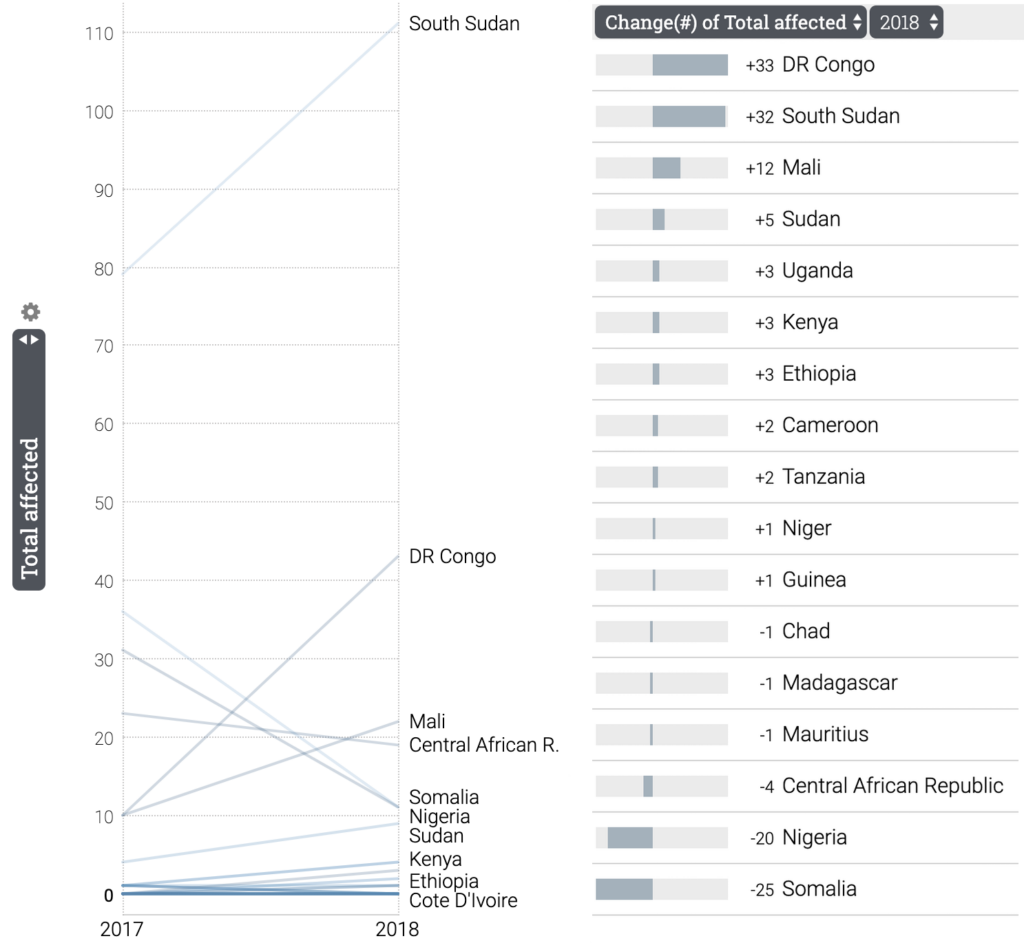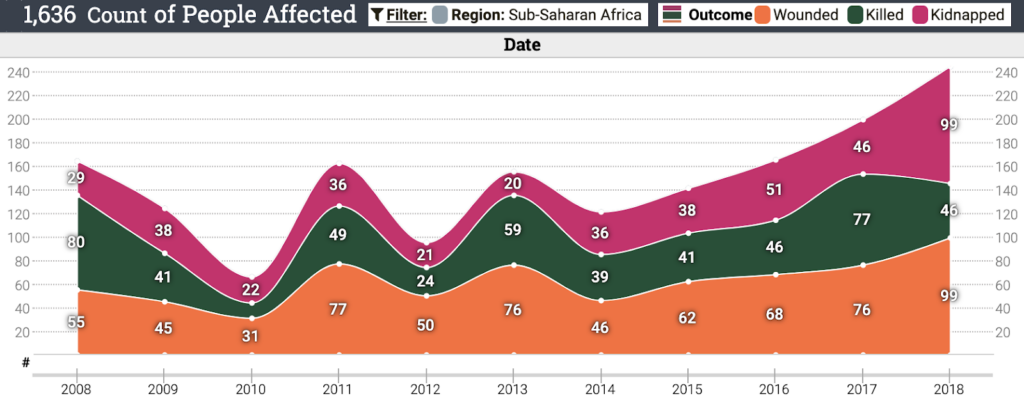The United Nations Office for the Coordination of Humanitarian Affairs (OCHA) estimates that 135.3 million people needed humanitarian assistance in 2018 due to human-induced crises, such as conflict and forced displacement, or natural disasters, such as earthquakes, cyclones, and floods. In the same year, humanitarian workers have delivered assistance to those in need worth USD 15.1 billion – around USD 6.4 billion of which went to countries in sub-Saharan Africa.
A United Nations Population Fund report notes that conflict has, by far, been the leading driver of humanitarian crises around the world. And in times of conflict, everyone is at risk, including humanitarian workers, who are usually the first to respond in relieving the suffering of people affected by such crises.
Exercising this noble profession has come at a cost. In the past decade (from 2008 – 2018), an estimated 1,219 humanitarian personnel were reportedly killed, 1,226 wounded, and a further 1,062 kidnapped. What is more striking is that around half of these incidents took place in sub-Saharan Africa.
These numbers are alarming. Greater safety and security for humanitarian personnel is crucial to ensure that those affected by a crisis receive the care they need. This article reports on the incidence and impact of attacks against humanitarian aid workers using the Aid Worker Security Database (AWSD) and the Keshif visual analytics dashboard, with a focus on sub-Saharan Africa.
Recent attacks and trends
On 19 April 2019, assailants shot and killed an epidemiologist and injured two other medical personnel at a hospital in the Democratic Republic of the Congo (DRC). They were deployed by the World Health Organisation to respond to the Ebola outbreak in the country. In another recent incident that same month, two aid workers were killed and three were abducted in an attack by gunmen on Kajuru Castle, a holiday resort 220km north of Abuja, the capital of Nigeria.
These are not the only incidents against humanitarian personnel that have occurred in 2019. According to data from AWSD, there have been 25 attacks across 10 countries in the region, with a total of nine workers killed, 17 wounded, and 13 kidnapped.

Based on previous trends, it is likely that these numbers will continue to increase through the remainder of 2019. Indeed, the total number of humanitarian workers affected by attacks in 2018 was 233. Between 2017 and 2018, there was a significant increase in the total number of humanitarian workers attacked in South Sudan and the DRC, while Nigeria and Somalia saw annual decreases.

The lasting weight of conflict: 10 Years of attacks against humanitarian personnel
Over the last decade, the incidence and impact of conflict on aid workers has increased. AWSD data shows a 40 percent increase in the total number of attacks over this period, from 164 in 2008 to 233 in 2018. Moreover, since 2014, the total number of attacks has been increasing by at least 20 attacks annually.

Around 80 percent of these reported incidents (753 out of 937) took place in just six countries: South Sudan, Somalia, Sudan, DRC, the Central African Republic and Nigeria. Combined, a total of 1,374 humanitarian personnel were affected in these countries, of which 456 were killed, 535 were wounded, and 383 were kidnapped. By contrast, for the same period in 24 other countries in the region, there were 184 reported incidents on aid workers in which 51 were killed, 149 were wounded, and 53 were kidnapped.
All of these high risk countries for attacks against humanitarian personnel – namely South Sudan, Somalia, Sudan, the DRC, the Central African Republic and Nigeria -face some level of political instability, civil conflict, high level of internal displacement, and shortages of basic needs, such as food, shelter, sanitation, and water. The lack of political and socio-economic stability necessitates the presence of such personnel.
Conclusion
While the number of attacks on humanitarian personnel in conflict-ridden and politically unstable countries may have changed from year-to-year in certain locations, the overall message remains the same: the incidence and impact of attacks on humanitarian personnel in sub Saharan Africa is increasing at an alarming rate.
Humanitarian personnel play a crucial role in relieving the suffering of populations that have been impacted by man-made and natural disasters. However, a growing lack of safety and security undermines the operational effectiveness of aid agencies and development partners to do their work rendering vulnerable populations in need of such services without support.
Humanitarian personnel should not to be considered a target, but rather a means to end desperate human crises and more needs to be done to protect them.
(Main image: Agok, South Sudan, March 2012 – A scene during an International Committee of the Red Cross distribution of seeds, agricultural tools and food staples to households in villages around Agok, South Sudan. Approximately 15,000 people displaced by fighting in May 2011 were given sesame, groundnuts and sorghum seed, plus tools for tilling and some food as seed protection – Tom Stoddart/Getty Images)
The opinions expressed in this article are those of the author(s) and do not necessarily reflect the views of SAIIA or CIGI.
